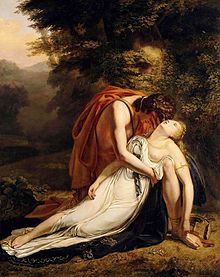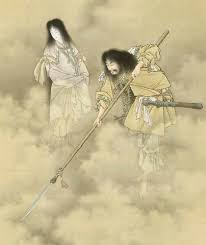The figure of Orpheus is a favourite in Greek mythology. He is not a typical hero. Unlike Hercules, Odysseus, Theseus, and others, he is not a warrior or king. Instead, Orpheus is a talented musician and charms people, animals, and gods alike. He met a particularly gruesome end and was the centre of a mysterious ancient cult.
Orpheus and Eurydice

The Orpheus myth most famous today tells of the death of Orpheus’s wife Eurydice. The couple is happily married. But one day, either a satyr (half man, half goat hybrid) or the god of beekeeping, Aristaeus, chases Eurydice through the woods. As she flees, a snake bites her and she dies.
Naturally, Orpheus is distraught over the death of his wife. He decides to descend to the underworld. With his music, he charms first Cerberus, the three-headed dog guardian of the Land of the Dead, and finally Hades and Persephone themselves. They say Orpheus can have his wife back. However, Eurydice will follow behind him and he must not look at her until they return to the surface together. Unfortunately, halfway back Orpheus realizes he cannot hear his wife’s footsteps and suspects the gods may have tricked him. He turns around and watches Eurydice’s ghost disappear back into the underworld. Later, Orpheus’ own death reunites the couple.
Big in Japan

A similar myth, but darker in tone, is found in Japan. The divine couple is Izanagi and Izanami. They are creator deities and form an island of Japan by stirring it out of the ocean with a jeweled spear. Afterwards, the couple has several children – many gods but also more islands. Unfortunately, Izanami eventually dies in childbirth.
Like Orpheus, the death of his wife devastates Izanagi. He even decapitates the god she died giving birth to. Izanagi then resolves to go to Yomi, the land of the dead. He finds Izanami but is unable to see her due to the darkness. Izanami says that she wishes he had arrived sooner as she had already “eaten at the hearth” (i.e. eaten the food of the underworld). Izanami warns Izanagi not to look at her and then departs to ask the rulers of the underworld if she may leave. Instead of waiting, Izanagi uses a piece of his comb as a torch and follows her. When he finds Izanami again, the light of the torch reveals her to be a rotten maggot-filled corpse. Izanagi screams and flees. Feeling betrayed, Izanami chases him through the underworld with a horde of demons. Her widowed husband escapes and traps his pursuers by rolling a boulder over the entrance to Yomi. They yell curses at each other through the bolder. Unlike the Greek couple, Izanagai and Izanami never reunite.
A Quick Analysis
Other cultures’ myths share several elements of the full Izanagi-Izanami stories. This is one reason they are especially compelling. However, lets focus on the episode of Izanami’s death as it has some striking similarities with the Greek story of Eurydice.
The common thread of a devastated husband deciding to go the underworld is probably not that eerie of a similarity. To put simply, it seems quite natural for an upset widow to imagine retrieving a dead loved one. Perhaps that is why descents to the underworld are common in myth. However, other parallel features are interesting. Both myths feature a direct warning to not look at the dead wife. Ignoring it reveals the wives to be in a state of true death – as a ghost and as a corpse. Interestingly, the news is presented in a shocking way. Although, it should be expected considering the wives did actually die, thus triggering the story.
These stories feature a negotiation with the rulers of the underworld. Although, in the Japanese tale, the planned negotiation does not occur as Izanagi fails to follow instructions. Such negotiations are typically a feature of all myths that involve a descent to the underworld. The reason for this universality may be fairly simple. In the real world, dead people do not come back. If your religion features a world controlled by deities and supernatural powers, it is logical to assume that such a force prevents the them from returning. Thus, if a story features a hero on an adventure to rescue someone dead, they must encounter some entity that has power over the underworld. This is a necessity for the myth’s plot to continue!
We All Like A Good Story
These Greek and Japanese myths are popular because they are good stories. Also, the parallels between the tales should certainly add to their appreciation. They illustrate that good stories truly know no borders and they hint at possible relationships between the different tales and the people that tell them. Additionally, these parallels demonstrate that different groups often agree on what makes such stories good.
Subscribe to my mailing list for updates on new content. If you know someone who would appreciate this post, feel free to share a link.
